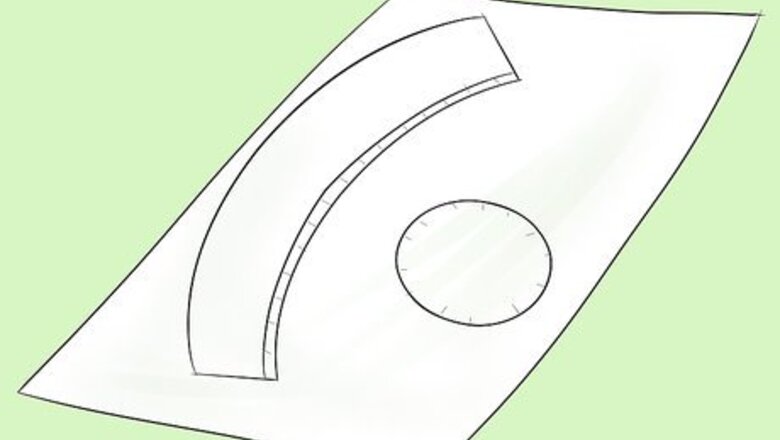
views
Making the Pattern
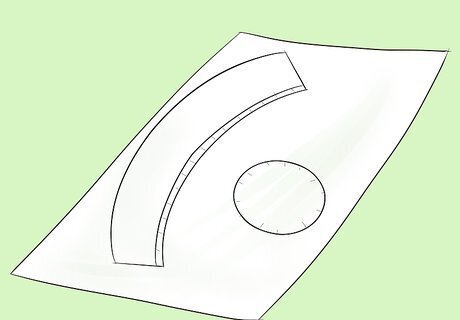
Print or draw a fez pattern. You can make your own fez pattern with a little effort, but if you find it difficult to get the dimensions right or would rather save yourself the trouble, you can find a free pattern online and use that. Print the pattern on standard printer paper. You can search for a pattern online. Search Pinterest or other similar sites.
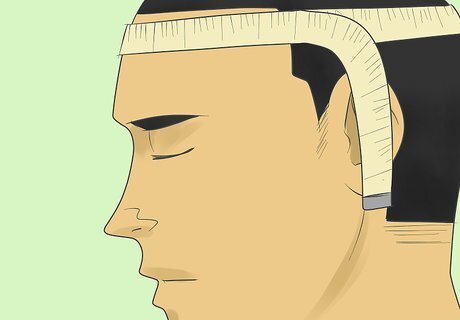
Measure your head. Use a cloth measuring tape to find the circumference of your head. Position the end of the measuring tape just below the curve of your skull, roughly 2 to 3 inches (5 to 7.6 cm) above the top of one ear. Wrap the tape around your head keeping it as parallel to the ground as possible while you work. Note that this measurement needs to be somewhat precise so that the hat sits snugly on your head, but also keep in mind that a measurement that is too tight will prevent the hat from sitting on your head at all.

Cut some string. Once you know the circumference of your head, multiply it by 1.273. For example, if your head measurement was 21.5 inches multiply 21.5 by 1.273 to get 27.37. You can imagine the shape you are going to draw for the body of your fez as part of a giant perfect circle. If the circle was a pizza, the piece we are trying to make would be the crust of one slice. Since we only need part of it, we don't have to draw the whole circle, just figure out its radius. We do that by multiplying your head measurement by 1.273. In this case, the radius is 27.37. Next, cut a piece of string that is that length. In this example, you would cut a piece of string 27.37 inches long. Make sure you use something that won’t stretch a lot. Birthday ribbon is a good alternative if you don’t have any string or twine.
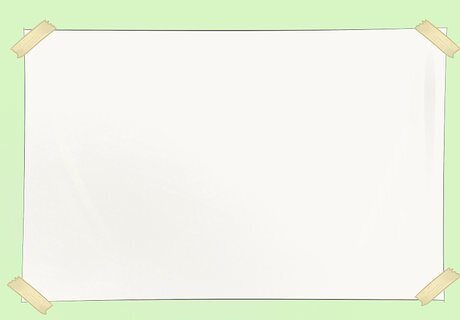
Tape your paper down. Before you start drawing your pattern, be sure to tape your paper down to the table or cutting board so that it doesn’t move around while you are working. One piece of scotch tape at each corner should be enough. Your best bet is to tape the paper down to a cutting board. This way it will stay secure after you draw your shape and be ready for you to cut it out right away.
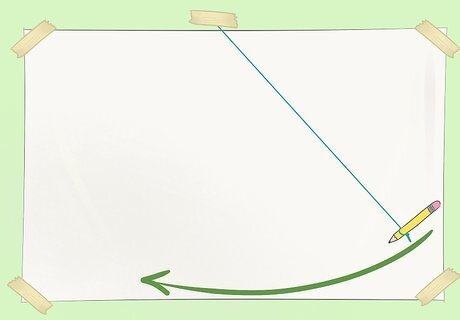
Draw a curved strip. The curved strip will form the side of your fez. The longest part of the curve will need to equal the circumference of your head plus an additional 1/2 inch seam allowance. Take the length of string you cut and hold one end of it on the table perpendicular to the paper. Tie a loop in the other end and slide a pen or pencil inside. Place the pen at one edge of the paper. The string should be stretched from the point on the table and run at an angle to the pen. Now, keeping the string taut, slide the pen like a pendulum across the paper, letting the string guide you. This will work like a homemade compass and allow you to make a perfect curve that will match the size of your head. Do the same thing for the top of the shape, making the second curved line 5 inches above the first. Make sure to keep the string tight while you draw your line or you’ll end up with an uneven shape. Keep your pen straight up and down while you draw. Tilting it will give you a distorted line.
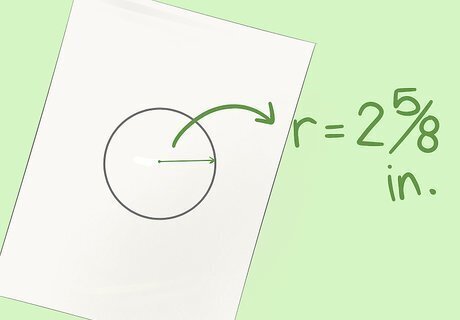
Draw a circle. On a standard piece of printing paper, draw a perfect circle with a radius of 2-5/8 inches (6.67 cm). The best way to do this is with a compass that you can buy at a place like Walgreens or Office Depot. Cut the circle out. This pattern piece will be used for the top of the fez.
Cutting the Pieces

Pin the pattern to some felt. Place the side pattern piece on a large piece of felt. Keep the felt and the paper as flat as possible, then slide straight sewing pins into the paper and material to hold the pattern in place. Repeat with the top pattern piece and another patch of fabric. Use as many pins as necessary to secure the pattern to the felt, but also keep in mind that pins cause the pattern to wrinkle and bunch up, so using too many could slightly distort the shape of the felt once you cut it out.
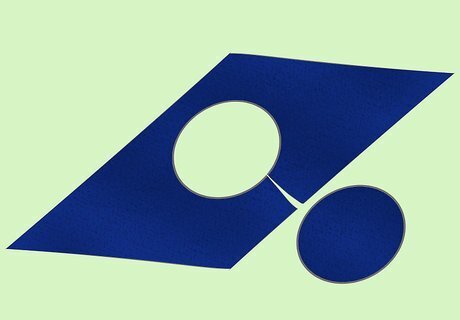
Cut out the pattern shape. Use sharp sewing scissors to cut out the felt pinned to the pattern pieces. Keep the scissors steady and rotate the felt as you cut. This will help you make a cleaner cut. Keep the sides of the scissors blunt to the edges of the paper pattern. Doing so can prevent the the scissors from cutting at an angle and making the resulting felt piece too narrow or too wide. Note that this first batch of felt will form the outside of your hat.

Repeat with a second piece of felt. Remove the pattern from your outer felt and pin both the top and side patterns to a second patch of felt. Cut these felt pieces out, as well. This felt will form the inner lining of your hat.

Repeat with interfacing. Interfacing is a textile used on the underside of garments to help them maintain a rigid structure. Remove the pattern pieces from the second batch of felt and place them on a piece of heavy interfacing. Interfacing can be purchased at fabric or hobby stores. Pin in place, then cut the interfacing out according to the dimensions of the pattern pieces. Interfacing is necessary since it gives the hat body and structure. Without it, the entire hat would likely collapse into itself after you sew it all together. Use a heavy interfacing for best results.
Making the Tassel
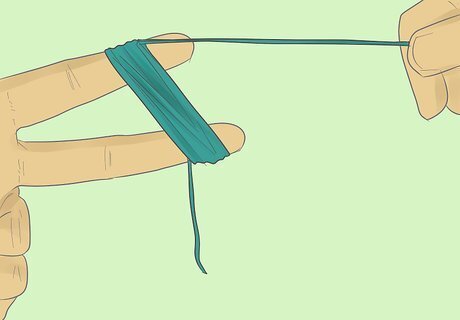
Create a loop of embroidery thread. Hold your non-dominant hand out straight, keeping the fingers together. Using your dominant hand, wrap a bundle of embroidery thread around your non-dominant fingers 20 to 30 times. The final tassel will be about four times as thick as the width you produce here, so keep that in mind as you wrap the thread around. If you find it difficult to use your fingers or if you want a larger tassel, wrap the embroidery thread around a heavy piece of cardboard or cardstock, cut to your preferred dimensions. Note that the tassel will be about half as long as the width of your cardstock.

Tie it off. Carefully slip the embroidery thread loop off your hand. Tightly wrap both loose ends of the thread around the center of the loop several times. Tie these ends together with a tight knot. Note that you need to be careful about where you wrap the thread. If you do not wrap the loop in the precise center, your tassel might be lopsided.
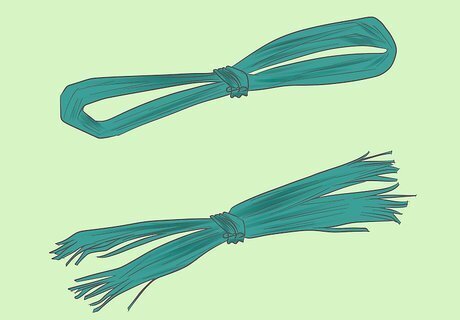
Cut the looped ends. With a sharp pair of scissors, cut the looped ends on either side of your knot. Rearrange the loose ends of thread so that they all come together below the center knot holding everything in place. You should already see the tassel shape forming at the conclusion of this step. If the ends of the tassel seem uneven, carefully trim them using your scissors until they are all roughly the same length.
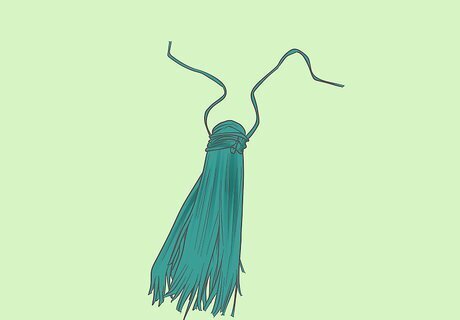
Tie the top. Cut a separate length of embroidery thread. Wrap this thread around the top of the loose ends, just a little below the knot, cinching that top portion together. This piece of embroidery thread will need to be about three to four times as long as your tassel. You will need to wrap the thread around a dozen times or more. Tie a small knot at the base of the wrapped portion when done. Let the ends of the thread hang down into the tassel, trimming them to size.

Join the ends together. Presently, you should still have two unconnected pieces of embroidery thread hanging off the knot. Tie these pieces together as close to the ends as possible, forming a loop. Snip off any excess thread hanging from this top knot so that the knot looks less noticeable. Set the tassel aside until you are ready to add it to the hat.
Putting It All Together
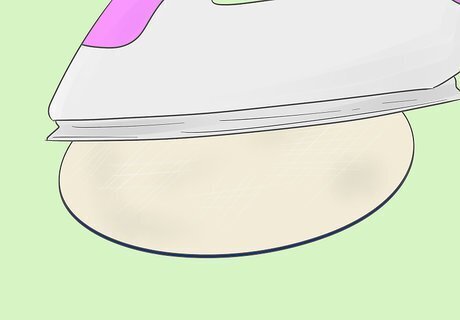
Iron the interfacing to your top felt. Spread out the side piece of your top felt on a flat surface. Note that the side facing you will be the inside of your hat. You’ll be constructing much of the hat inside out in order to hide the seems. Place the interfacing on top of the felt and pin in place with a few straight pins. Then iron the interfacing onto the felt according to the manufacturer's instructions. Repeat this process with the top of the fez, as well. Make sure that the glossy side of the interfacing faces the fabric. The glossy side is usually the adhesive side. Use a low heat and a thin press cloth when ironing the pieces together. Do not use direct heat and do not use a high heat setting since doing either action may cause the felt to burn. Iron around the straight pins initially. Once the fabric and interfacing feel securely joined, remove the pins and iron over the spot to adhere the interfacing there. Let cool when done.
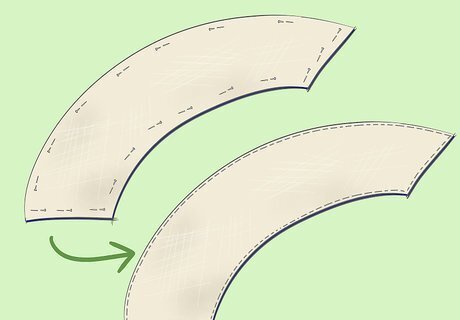
Pin and sew the two side pieces of felt together. At this point you should have an inside and outside piece for the side of your fez. Spread out the outside piece of felt with the interfacing side flat against your working surface and the outer side facing you. Lay the inner felt on top, matching the edges precisely. Pin in place using straight sewing pins, then sew around both curved edges of the fabric with a 1/4 inch (0.6 cm) seam allowance. A seam allowance is the area between the edge and the stitching line on two pieces of material being sewed together. Do not sew the two straight ends of the fabric together. When done, pull the two pieces of felt and the interfacing through one of the open ends. The interfacing should now be hidden on the inside of the joined fabric, and the side of the fez is now right-side-out.
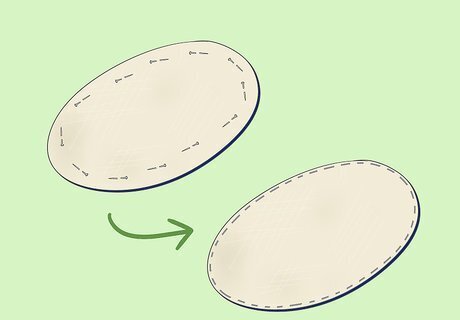
Pin and sew the two top pieces of felt together. Just like with the side pieces, you should have two top pieces at this point, your outside piece, which has the interfacing on it, and your inside piece. Place the top piece of felt on your working surface with the interfacing lined side down. Set the inner felt material down on top, matching up the edge as closely as possible. Pin in place, then sew the pieces together, using a 1/4 inch (0.6 cm) seam allowance. Leave a small 1 inch (2.5 cm) gap in the side of the circle as you sew the pieces together. Remember, you are initially stitching these pieces together inside out to hide the seems. Leaving this small gap in the circle will allow you to pull the top piece of the felt right-side out once you’ve finished sewing it together. Do not sew the circle all the way around. When done, turn the circle right-side-out by pulling the material through the open gap. The interfacing should now be on the inside of the piece. Close up the hole you left to pull the piece right side out. Carefully fold the remaining open edge inside the circle. Stitch closed.

Match the two ends. Now you are ready to take your side piece and sew the ends together forming the round shape of your fez. Lay the side piece of felt on your working surface so that the outside faces you. Fold it in half, bringing the two straight ends together. Line the edges up evenly and pin in place.
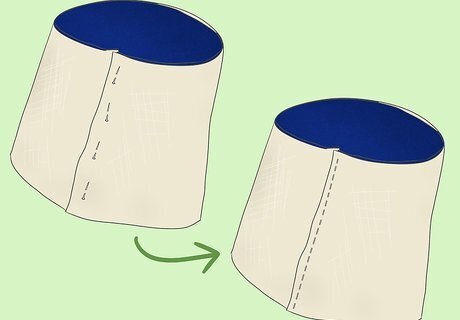
Sew along the edge. Stitch along this pinned edge with a 3/8 inch (0.9 cm) seam allowance. Remove the pins when done.
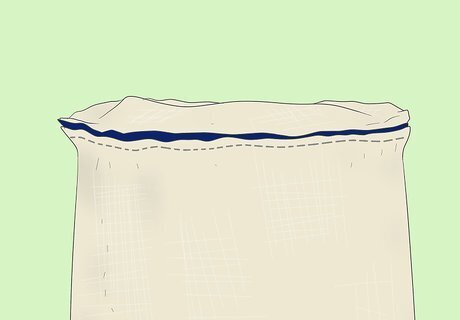
Attach the top piece of felt. Stand it up on the larger of the two openings, and place the top felt on the smaller of the two openings. At this point, your fez is still inside out. Pin in place, then sew the top round of felt onto the side with a 1/4 inch (0.6 cm) seam allowance. When pinning the top felt onto the side, make sure that the inside of the top piece faces you. This part can be tricky to sew. Keep the round top piece facing down, lying along the sewing machine, with the side of the fez extending up and into the air.

Snip around the inside top. Make small cuts into the top circle of the fez with the hat still inside-out. Use sharp scissors for clean cuts. These slits prevent the fez from bulging out at the top as you wear it. Make sure that these slits go up to the line of thread but not through it.
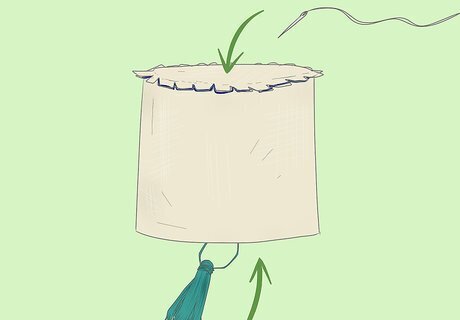
Attach the tassel. Thread a needle with standard, all-purpose thread. Bring the thread up from the inside top of the fez, straight through the center. Wrap the thread through the loop of your tassel before bringing your needle back through the top of your fez. Knot the thread on the inside of the hat. You can make this connecting thread as long or short as you want it to be based on where you want the tassel to hang. Note that if the fez is still inside-out as you work. The knotted side of your thread should face you and the tassel should be hidden.
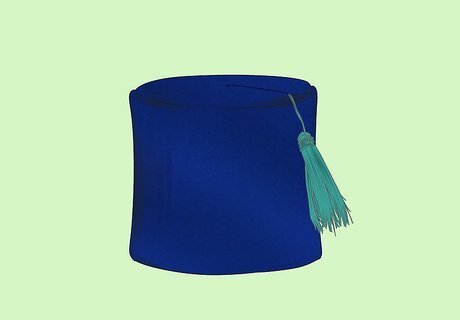
Admire your work. Turn the hat right-side out again. Straighten out the edges and the tassel, then try your fez on. With this step, the project is now complete. Note that the fez should stay on with no assistance. If it wants to slip off, however, you can use bobby pins to help hold it in place.




















Comments
0 comment